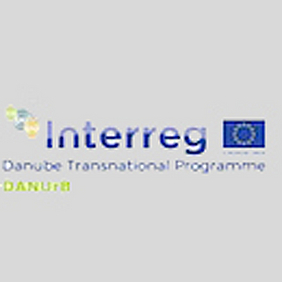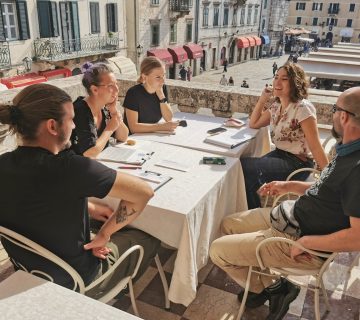Project DANUrB is building a regional network using a common Danube identity – and smart interpretation of its cultural and natural heritage – to employ heritage for tourism and satellite businesses.
In January 2017, a remarkable three-year project called DANUrB started. The DANUrB consortium is led by the Budapest University of Technology and Economics (BME) and involves 19 partners from seven Danubian countries, along with 19 associated strategic partners. Austria, Bulgaria, Hungary, Slovakia, Croatia, Serbia and Romania are represented by universities, municipalities, regional governments, tourism organisations, heritage establishments, business organisations and SMEs (http://www.interreg-danube.eu/approved-projects/danurb).
The project promotes a common brand by fostering trans-national cultural ties between settlements along the Danube. It explores the unused/ hidden cultural and social capital resources of these communities for a better economic and community return.
We are building a knowledge platform for professionals in research and heritage management and a cultural network of communities and heritage related establishments. This spatio-cultural network – the Danube Cultural Promenade – will connect all the communities along the river into one tourism destination. The project has also written interpretive material for tourism promotion by professional guides: the Bulgarian Guide and the Hungarian Pocket Guide, both of which are widely distributed internationally and locally.
The project facilitated remarkable study visits in the Wachau region of Austria and the UNESCO World Heritage wine terraces there. We learned stories related to the World War II architectural heritage of Krems. We studied the emotional and historical lessons learned about the future of the twin Danube towns Sturovo and Esztergom. These communities are linked by the Mária Valeria Bridge, destroyed in World War II and finally rebuilt with EU funds six decades later.
The study visits also took us to Enns where the marvelous interpretation of the town’s city guide and the Enns Lauriacum museum director let us travel back to the past in a memorable way. We organised innovative participatory art interventions and photo interviews with more than 50 students collecting and telling stories related to the site visits. Semester-long design studies within the architecture faculties of partner universities took place and on-site research workshops were organised.
On June 29th, 2017, all the countries along the Danube celebrated the significance and majesty of this European river. As part of this Danube Day celebration, DANUrB organised the DUNAJA event in the twin-towns of Štúrovo and Esztergom (Slovakia and Hungary). DUNAJA involved citizens in various activities and accompanying events, in collaboration with local public institutions and was a great success.
Diversity of culture is what brings people together. As an expression of social relations, it is embodied in various formations – architectural monuments, traditions, customs, language, food and art. These ultimately co-create the complex and specific "genius loci" of a given site. We often see the physical appearance of heritage without knowing much about it. DANUrB aims to explore the cultural values of heritage, and also its practical meanings for people. These more pragmatic aspects include agricultural, engineering and architectural heritage, e.g. flood prevention, traditional agrarian practices, etc.
During the international Danube Day on June 29, visitors to Å túrovo and Esztergom enjoyed our rich programme and even got to taste our traditional fish soup – halaszle. The programme also included concerts, a photo exhibition and a display presenting the work of four generations of the Feigler family – architects who lived on both banks of the Danube River in the 19th century. The students presented their studio works as part of their diplomas. These virtual reality works are linked to sites along the river in four countries.
The DUNAJA programme of DANUrB gave the opportunity to the stakeholders from the seven participating countries to work on their future community planning and look at managing heritage in their territories.
Margarita Kaisheva works for the Center for Heritage Interpretation in Sofia, Bulgaria, which is a partner of the Danube Transnational Programme’s DANUrB project. She can be contacted at: mborisova@bitex.com
To cite this article:
Kaisheva, Margarita (2017) ‘DANUBE: The challenge of common identity and branding’. In Interpret Europe Newsletter 3-2017, 16-17.




